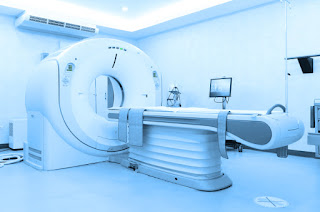The Hitachi Oasis Open
High-Field MRI features a patient-centric design that can successfully
accommodate patients who may be difficult to scan. Challenging patients such as
pediatric, geriatric, bariatric, and claustrophobic also appreciate this open
architecture environment. Here are some of the most known advantages to using
this advanced MRI machine on patients who have unique scanning needs.
Pediatric Imaging
The Hitachi Oasis Open High-Field MRI features an innovative open architecture design that ultimately present parents with the opportunity to have continuous contact with their child during the MRI scan. The possibility for constant parent and child interaction ensures that even the smallest patients have the ideal MRI experience. The unlimited access usually results in low sedation rates among children as these young patients will feel comforted by their parents throughout the entire scan.
Geriatric Imaging
The open architecture design is also great for geriatric patients who would like to have a friend or loved one nearby throughout the exam. Additionally, the practical feature enables technologists to easily observe the patient from anywhere around the magnet. The ultra wide geriatric imaging area enhances accessibility and comfort for older patients as the 32-inch table can be lowered to 20 inches. The adjustable table greatly reduces the strain and struggle during the set-up stages.
Bariatric Imaging
This state-of-the-art adjustable table also accommodates larger patients who may have difficulty positioning themselves on the machine. The table can withstand a maximum weight of 660 pounds, and even accepts patients with broad shoulders. The table is equipped with 3-axis motorized movement for a technologist’s convenience. The machine also offers an XL Flex Body coil, which is the largest receiver coil available that delivers a superb image quality.
Claustrophobic Imaging
This MRI product is recognized for offering patients an anxiety-free environment. Because the open architecture design is complete with a wide table, patients have an unobstructed view on their left and right as well as plenty of space to reposition their bodies during the scan. Designed with RADAR technology, the machine’s ability to account for movement throughout the scan reduces rescans and improves image quality.
Pediatric Imaging
The Hitachi Oasis Open High-Field MRI features an innovative open architecture design that ultimately present parents with the opportunity to have continuous contact with their child during the MRI scan. The possibility for constant parent and child interaction ensures that even the smallest patients have the ideal MRI experience. The unlimited access usually results in low sedation rates among children as these young patients will feel comforted by their parents throughout the entire scan.
Geriatric Imaging
The open architecture design is also great for geriatric patients who would like to have a friend or loved one nearby throughout the exam. Additionally, the practical feature enables technologists to easily observe the patient from anywhere around the magnet. The ultra wide geriatric imaging area enhances accessibility and comfort for older patients as the 32-inch table can be lowered to 20 inches. The adjustable table greatly reduces the strain and struggle during the set-up stages.
Bariatric Imaging
This state-of-the-art adjustable table also accommodates larger patients who may have difficulty positioning themselves on the machine. The table can withstand a maximum weight of 660 pounds, and even accepts patients with broad shoulders. The table is equipped with 3-axis motorized movement for a technologist’s convenience. The machine also offers an XL Flex Body coil, which is the largest receiver coil available that delivers a superb image quality.
Claustrophobic Imaging
This MRI product is recognized for offering patients an anxiety-free environment. Because the open architecture design is complete with a wide table, patients have an unobstructed view on their left and right as well as plenty of space to reposition their bodies during the scan. Designed with RADAR technology, the machine’s ability to account for movement throughout the scan reduces rescans and improves image quality.




